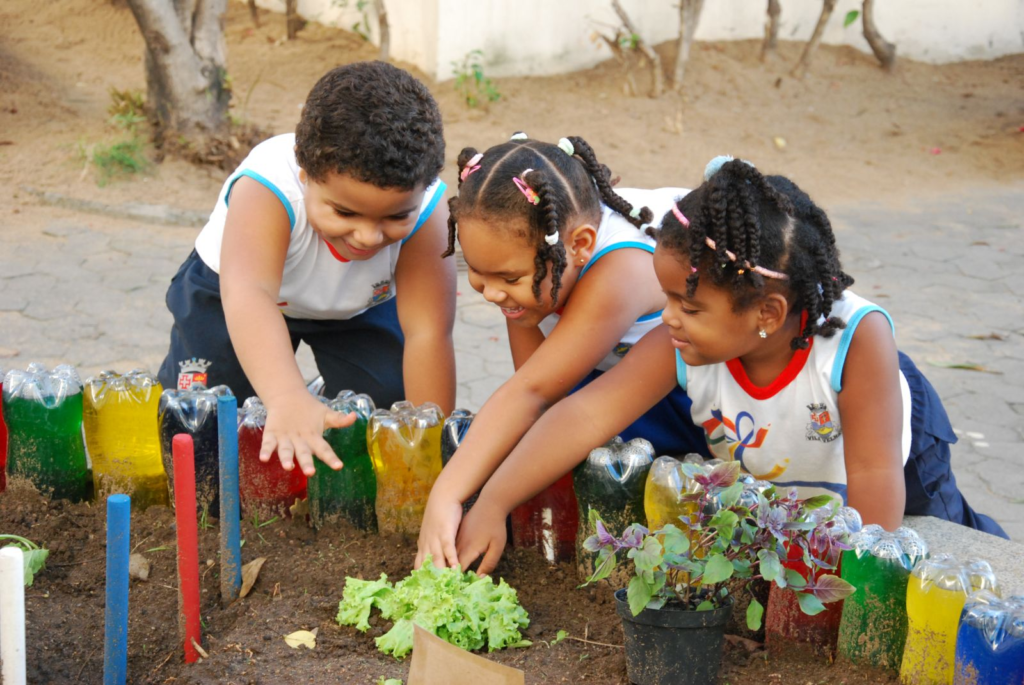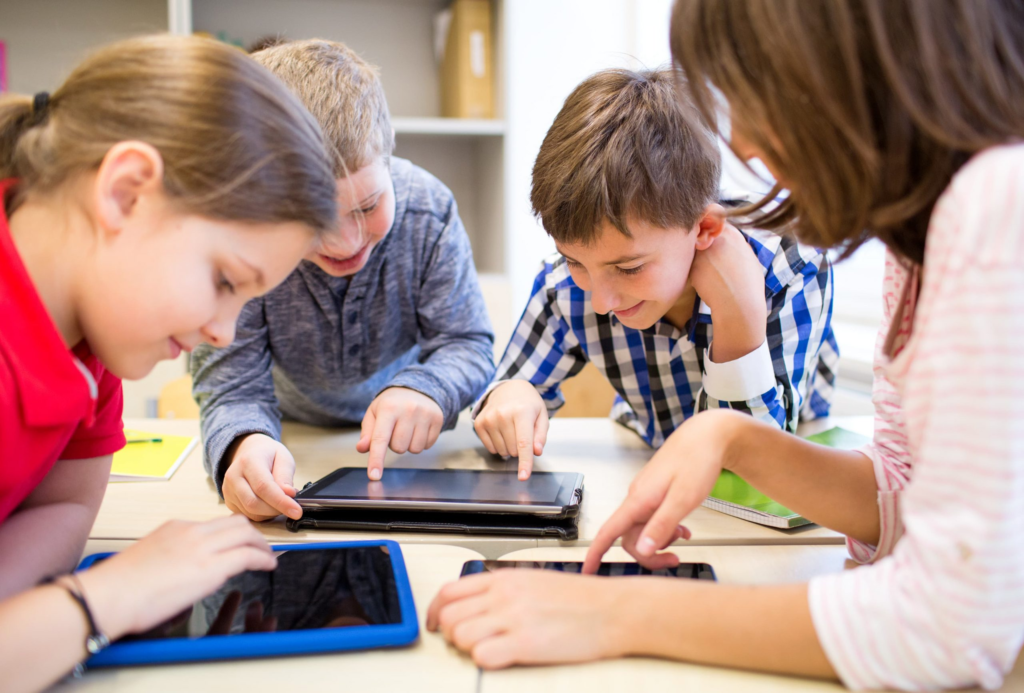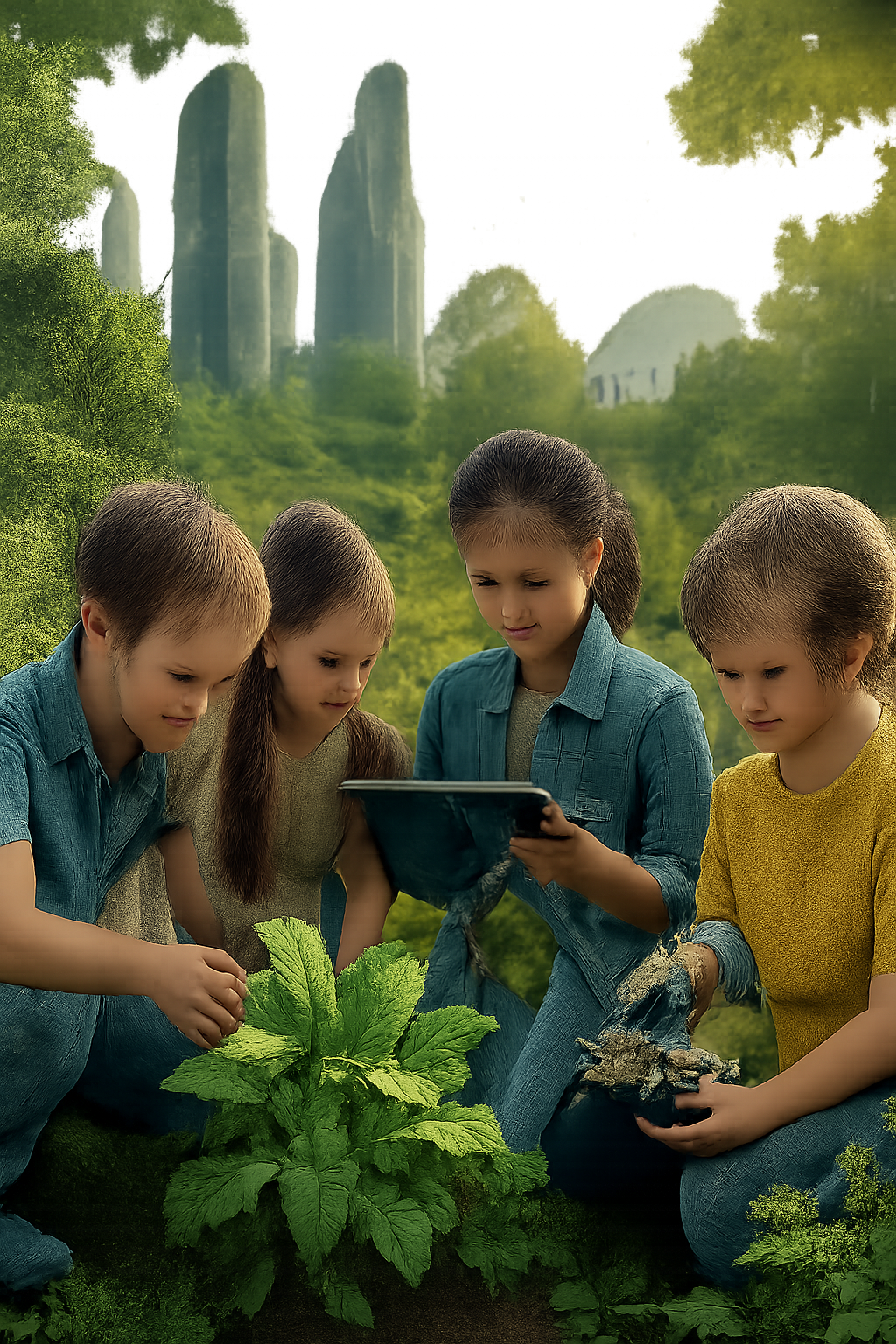🌎 Como Crianças Conectam História, Ecologia e Tecnologia desde Cedo
Uma história de aprendizado enraizada no passado e voltada para o futuro
Que tipo de mundo pode existir se as crianças de hoje se tornarem guardiãs da Terra e criadoras de uma tecnologia mais consciente? Cada geração herda um conjunto de ferramentas — conhecimento, empatia e imaginação. Ensinar mentes jovens a unir história, ecologia e tecnologia é como entregar a elas uma bússola para o século que vem.
Por que a conexão importa
História, ecologia e tecnologia formam um triângulo vivo de aprendizado. A história mostra como a ambição moldou o planeta. A ecologia nos lembra que todo progresso deixa marcas. A tecnologia, quando guiada pela ética, torna-se a ponte capaz de curar o que o passado feriu. Ensinar esses fios juntos transforma curiosidade em cuidado.
1. A narrativa como ponte entre eras

Deixe a história ganhar vida
As crianças amam histórias porque elas humanizam o conhecimento. Uma narrativa sobre um inventor ou uma civilização revela como imaginação e natureza dançam — às vezes em harmonia, às vezes de forma imprudente. Falar sobre a Revolução Industrial, por exemplo, convida à reflexão tanto sobre a glória tecnológica quanto sobre o custo ecológico. Assim, o passado deixa de ser memorização e passa a ser perspectiva moral.
Ideias para experimentar
Criar um projeto de “reescrever a história”, no qual os alunos imaginam decisões mais sustentáveis em momentos históricos importantes.
Transformar a sala de aula em um museu vivo, exibindo invenções feitas com materiais reciclados inspiradas em descobertas históricas.
2. Aprender com a Terra tocando nela

Lições além da sala de aula
Ecologia não é algo que se decora — é algo que se sente nas mãos. Quando uma criança planta uma semente e acompanha seu crescimento, a sustentabilidade deixa de ser conceito e vira emoção. O aprendizado ao ar livre torna a empatia visível.
Atividades
Hortas escolares: cultivar legumes e ervas enquanto se aprende sobre solo, ciclo da água e paciência.
Adote-uma-árvore: permitir que as crianças cuidem de uma planta ou árvore local, observando suas mudanças ao longo das estações.
3. Tecnologia como exploração, não como fuga

Usando a inovação para compreender o mundo
A criatividade digital pode ajudar as crianças a enxergar sistemas invisíveis — evolução, energia, ecossistemas. A tecnologia deve ampliar os sentidos, não os substituir. Com orientação consciente, as telas viraram portais de exploração, não de isolamento.
Ideias para aprendizagem com tecnologia
Utilizar aplicativos interativos para explorar mudanças ambientais, mapas históricos ou museus virtuais.
Estimular pesquisas sobre inovações modernas que ajudam a restaurar ecossistemas, como drones oceânicos ou robôs de reflorestamento.
4. Cultivar o hábito de questionar
Pensamento crítico como sustentabilidade mental
Ensinar a curiosidade a fazer grandes perguntas. Por que determinada invenção foi celebrada? Que preço a natureza pagou? O que podemos fazer diferente agora? Debates em sala sobre industrialização, automação e cultura constroem a compreensão de que crescer também exige refletir.
Temas para debate
“É possível inovar sem explorar?” ou “Como a tecnologia reflete os valores humanos?”
Propor redações em que as crianças imaginem um mundo que equilibre invenção e conservação.
5. Criatividade: a linguagem da conexão

Transformando conhecimento em expressão
A arte transforma compreensão em beleza. Pintar uma cidade movida a energia solar, escrever um poema sobre rios ou criar uma animação sobre reciclagem permite que as crianças conectem conhecimento à emoção. A criatividade torna o aprendizado memorável.
Projetos criativos
Criar um cartaz ecológico unindo símbolos da história, da ciência e da tecnologia.
Produzir um pequeno documentário mostrando como a inovação pode proteger a natureza em vez de destruí-la.
Reflita: Uma nova definição de educação
Misturar história, ecologia e tecnologia dá coração à educação. Substitui fatos isolados por consciência integrada. Crianças formadas com essa visão aprendem a enxergar o mundo não como matérias separadas, mas como uma única história viva da qual elas fazem parte.
“Ensinar não é apenas transmitir informação para frente — é ensinar empatia para trás, em direção à história, e para fora, em direção à Terra.”
Cada aula, cada pergunta, cada semente plantada hoje escreve a biografia da esperança de amanhã.
